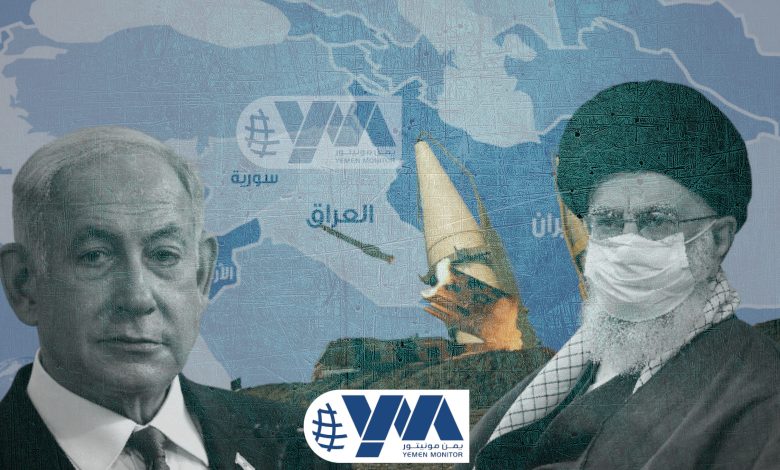Palestine, Israel and the Red Sea in the Iranian strategy

Yemen Monitor by: Adnan Hashem:
Since the end of the war with Iraq, Iran has pursued a strategy of deterring war from reaching its homeland. Last April, the Iranian Navy Commander stated that Iran’s strategic depth extends to a 5,000km radius, encompassing the Red Sea, the Western Indian Ocean, and extending to the Mediterranean Sea and the Strait of Gibraltar.
Tehran’s strategy in the Red Sea is driven by the goal of influencing the vital passage from the Gulf of Aqaba to the Gulf of Aden, as part of its objective to strengthen its position as a major power in the Middle East and Africa (the strategic region where natural resource ambitions and international political interests intersect). This strategy aims to enhance Iran’s regional influence and affect international policies.
The Palestinian cause has always been prominent in the policies of the current Supreme Leader, Ayatollah Ali Khamenei. However, this policy does not revolve around the future of Palestine; rather, it is about curbing Israeli influence and hegemony in the Arab region at its expense. A strategic clash of interests in which they agree to drain the influence of Arab powers from the Gulf to Egypt and Mesopotamia; therefore, the 2003 invasion of Iraq granted influence to Tehran and Tel Aviv by neutralizing Baghdad as a self-absorbed regional power under Iranian hegemony, while “Israel” remained the only nuclear power in the region.
The Red Sea attacks have given the Houthi movement a prominent seat at the table of Iran’s “Axis of Resistance,” after the group felt it was being pushed aside since the March 10, 2023 agreement between Saudi Arabia and Iran under Chinese auspices. The Houthis have presented themselves as a key player who, with access to military capabilities and technology from the Iranian regime, can be better than Hezbollah in Lebanon, which Iran built from scratch and relied on as a regional center for Iranian influence and impact on regional policies. This is what the Houthis have been emphasizing since the start of their Red Sea attacks last November.
Despite Tehran’s reliance on the Axis of Resistance to keep its adversaries preoccupied and keep the Iranian homeland safe from any backlash, since last November it has become more confident in sending its forces and navy outside its borders, including a drone carrier to the Western Indian Ocean and warships to the Red Sea. This reflects a sharp shift in the power dynamics that Iran has felt since the Russian invasion of Ukraine. Iran is no longer isolated and is actively promoting a multipolar world where it is preparing to take a place; as it suddenly enters into a sort of alliance with both Russia and China, which have (VETO) power in the UN Security Council. Military coups in Africa against Western colonial powers have helped Iran gain a foothold in most coastal states and the Horn of Africa; using its propaganda by supporting the Houthis to confront colonial powers in the Red Sea, and showcasing its weapons in the Houthis’ defeat – to some extent – of the United States and Britain as an advanced weapons manufacturer that can deter attempts to return colonialism to their areas. Indeed, Mali and Niger have shown interest in Iranian weapons, especially the “Shahed” drones that Russia is using in Ukraine.
The Houthis in Yemen are providing Iran with a strategic advantage by diverting tensions away from Iranian waters. Instead of the Iranian Revolutionary Guard (IRGC) carrying out operations in the Strait of Hormuz to send messages to adversaries and pressure them to circumvent Western sanctions, which has been causing regional anger, especially after the March 10th agreement, Iranians can now shift their attacks to Bab al-Mandab Strait.
The Houthis’ adoption of multiple attacks provides Iran with an opportunity to deny its involvement in targeting international shipping, while at the same time being able to send its messages. For example, in March, just days after the Houthis announced the expansion of their operations to ships in the Red Sea and those crossing the Indian Ocean, Tehran issued a warning in response to US actions to impose sanctions on the Iranian energy sector: “If our oil and tankers are seized anywhere in the world, we will respond in kind.”
Iran’s April response to Israel marked a significant shift, with the Revolutionary Guard directly targeting Israel for the first time in decades, breaking the pattern of shadow wars. The conflict hinges on opposing strategies to curb the dominance of Arab powers: Tehran aspires to be the regional hegemon, while Israel strives to maintain its status as the sole nuclear power by preventing Iran from acquiring nuclear weapons.
Strategists in Tehran, Tel Aviv, and Washington all agree on averting a direct war between them. The Revolutionary Guard’s response to the killing of its commanders in Syria was therefore carefully calculated to prevent such a scenario, as was Israel’s measured response. However, it also served as a show of Iranian force, flying over regional countries and involving its “Axis of Resistance” proxies. This sent a clear message that is unlikely to have gone unnoticed by the political leaders of Gulf states, Egypt, and Jordan.
Throughout his years as Supreme Leader, Khamenei has built a reputation as a skilled policymaker, employing a strategy of “strategic patience.” This entails avoiding direct confrontation with the US and Israel while establishing proxy militias in Lebanon, Iraq, Syria, and Yemen, collectively known as the “Axis of Resistance.” However, this departure from the shadow war brings the region to the brink of a wider conflict. If containment efforts fail, Iran’s “Axis of Resistance” strategy, designed to keep war away from its own soil, could ironically lead to it.
Qasem Soleimani’s gamble on the Houthis paid off, enabling Iran’s agenda in the Red Sea and putting pressure on Saudi Arabia. However, the escalating regional tensions could reshape the relationship between Tehran and the Houthis if the situation in the Red Sea intensifies, threatening to bring war to Iranian territory. The Iranian regime would then be cornered: either abandon the Houthis to their fate and lose its hard-earned regional and African support among the “oppressed” – a term frequently used in Iranian politics – or enter a war with the West, an outcome Iranians do not desire.
The Iranians have always maintained that the Houthis are beyond their political and military control. Similarly, the Iraqi militias that killed US soldiers seem to have crossed Iran’s red lines as well. This disruption of the balance Iran has carefully maintained for decades – pressuring adversaries without crossing established red lines – threatens Iranian national security more than the mistakes of Iranian politicians.
An uncontrolled and unruly Iranian axis harms Khamenei’s strategy and endangers his country, leading to growing dissent within the regime against his choices. As Mohammad Ali Sobhani (former ambassador to Lebanon and Syria) stated in an Iranian media outlet, Iran’s “aggressive foreign policy” has prevented the country from “playing a positive role in regional developments.”
The events of October 7th in Gaza have altered the region’s dynamics. A new regional map is undoubtedly emerging under the trembling US and Western hands supporting the occupation’s genocide. Iran is making significant regional gains, but it is also testing Iran and Khamenei’s options for keeping war away from home. If one thing has become clear since October 7th, it is that a single event can alter many policies and push the region towards war.





